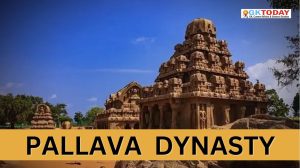Page-5 of Ancient Indian History
Six Vedangas
Vedangas are six auxiliary disciplines associated with the study and understanding of the Vedas. They are as follows: Shiksha (Phonetics) Its aim is the teaching of the correct pronunciation of the Vedic hymns and mantras. The oldest phonetic textbooks are the Pratishakyas ..
Difference between Vaisesika and Nyaya Schools of Indian Philosophy
Vaisesika is allied to the nyaya system of philosophy. Both systems accept the liberation of the individual self as the end goal; both view ignorance as the root cause of all pain and misery; and both believe that liberation is ..
Pallava Dynasty
Pallavas {literally means a branch} were a prominent power in India for more than four centuries between the 6th and 9th centuries. Origin of Pallavas There are no records about Pallavas in the vernacular legends. They were forgotten until a ..
Changes in Society during Early Medieval India
The social changes in the early medieval India were mainly the product of certain economic developments, such as land grants and large scale transfers of land revenues and land to both secular and religious elements, decline of trade and commerce, ..
Literature in Gupta Era
Sanskrit literature reached its climax in the Gupta period. This era is known for equal writing of prose and poetry. Sanskrit became the Lingua franca of India. Final editing of the Ramayana and Mahabharata took place in Gupta Period. Puranas, ..
Religion in Gupta Era
Buddhism was generally prevalent in Northern India including Kashmir, Afghanistan and Swat Valley two centuries prior to Christian era and 2 centuries after it. Jainism was prevailing but did not attain much popularity. Hinduism never ceased to exist and retained ..
Gupta Era Economy
The salient features of Gupta economy included a flourishing trade (which was badly affected in later periods due to Huna invasions), abundant custom revenue from ports in west and east, flourishing robust guild system, flourishing manufacturing industries and a high ..
Gupta Administration of Gupta Empire
With the imperial Guptas in power, once again there was a Brahamanic notion in the Kingship whereby King’s right was divinely ordained and it was sanctified by the ceremonies that priests performed on their behalf. As put by the Markendeya ..
9 Gems (Navratnas) of Chandragupta Vikramaditya
Chandragupta-II was known for his deep interest in art and culture and nine gems or Navratna adorned his court. The various fields of these 9 gems prove that Chandragupta gave patronage to arts and literature. Brief description about the nine ..
Comparison of the Harappa and Vedic Civilizations
The key differences between Harappa and Vedic Civilization are enumerated as follows: The sources of information of the Harappan civilization are mainly archaeological, while the Vedic culture is mostly known from the literary sources. Harappans are said to have been ..


